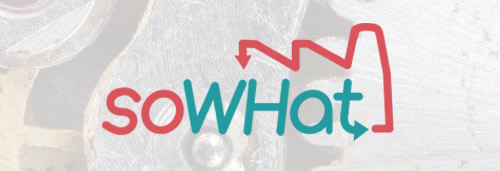{{serverconnectlatestnews.data.showlatestnews.data[0].news_title}}
{{serverconnectlatestnews.data.showlatestnews.data[0].news_date.formatDate("d MMM yyyy")}}
{{serverconnectlatestnews.data.showlatestnews.data[0].news_teaser}}

Software for waste heat and cold technologies. An integrated tool to support industries, energy utilities and municipalities for the exploitation of Waste Heat and Waste Cold.


This project has received funding from the European Union’s Horizon 2020 research and innovation programme under grant agreement No 847097
The amount of heat wasted by industries in the form of hot water or flue gases is sufficient to cover 100% of EU’s heating needs, but the potential of waste heat and cold (WH/C) is still unlocked due to a number of technical and non-technical barriers.
SO WHAT has received funding from the European Union’s Horizon 2020 research and innovation programme to promote WH/C recovery and Renewable Energy Sources integration at industrial scale tackling all these challenges.
Dates - June 2019 – November 2022
Sponsor - Horizon 2020
Consortium - 7 countries, 21 partners, 11 demonstration sites
EU Contribution - €3,397,497
Overall Budget - €4,195,357
The main objective of the SO WHAT project is to develop and demonstrate at Technology Readiness Level 8 (TRL8) an integrated software which will support industries and energy utilities in selecting, simulating and comparing alternative Waste Heat and Waste Cold (WH/C) exploitation technologies that could cost-effectively balance the local forecast H&C demand and also via renewable energy sources integration.
The project tool will support the identification of WH/C sources and mapping of the potential of locally accessible renewable energy sources to integrate with WH/C. It will enable the user to map and evaluate the local expected demand for heating and cooling, integrating the surrounding community in the simulations to identify additional recovery options.
SO WHAT will assess the impacts of the alternative technologies and promote innovative contractual agreements and financing models to deliver economically viable solutions.
SO WHAT will capitalise already existing tools and knowledge from previous research experiences and the expertise of 11 industrial validation sites from different sectors that will be involved in the project to validate the tool and provide relevant insights for its development The Materials Processing Institute will validate the tool using its own Normanton Steel Plant and examples from the wider steel industry.
The SO WHAT integrated tool will be designed to support industries, and energy utilities in:
RINA Consulting S.p.A (Italy) - Coordinator
Materials Processing Institute (United Kingdom)
IES R&D (Ireland)
Cartif Technology Centre (Spain)
University of Birmingham (United Kingdom)
Sustainable Innovations Europe (Spain)
IVL Swedish Environmental Institute (Sweden)
2Go Out Consulting (Portugal)
AdEPorto – Porto Energy Agency (Portugal)
Kelvin Solutions (Belgium)
FAEN - Asturian Energy Foundation (Spain)
POM Antwerp (Belgium)
MEDGreen (Romania)
Martini & Rossi S.p.A (Italy)
LIPOR - Intermunicipal Waste Management of Greater Porto (Portugal)
Göteborg Energi (Sweden)
Varberg Energi AB (Sweden)
Termoficare Constanta (Romania)
Eleukon Global SL (Spain)
Environment Park S.p.A. (Italy)